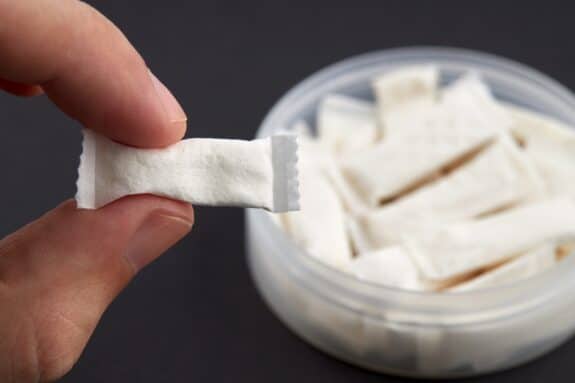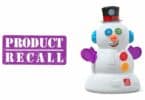If you have young kids at home, you already know that keeping them safe is a never-ending job. From locking cabinets to anchoring furniture, we go out of our way to protect our children from everyday household hazards. But there’s a growing risk that many parents may not be thinking about; one that’s small, colorful, and sometimes minty fresh.
Nicotine.
Yes, nicotine, the highly addictive chemical found in cigarettes and vapes, is now taking on new forms that look a lot more like candy than a toxic substance. And according to a new study published in Pediatrics, these products are causing thousands of accidental poisonings in children under six.
Let’s break down what the researchers found, what’s changed in the last decade, and why every parent should take a closer look at what’s in their junk drawer, purse, or glove box.
A Silent Threat
Between 2010 and 2023, U.S. poison control centers received more than 134,000 calls about young children who had accidentally ingested nicotine. That’s not a typo – over 134,000 kids, most under the age of 2.
While some of these exposures were minor, the consequences in other cases were frighteningly severe: seizures, respiratory failure, comas – and in two heartbreaking instances, death.
So how does this happen?
In many cases, it’s simple curiosity. Toddlers are explorers. They put everything in their mouths. And when a product is packaged in bright colors, smells like fruit, or looks like a gummy or mint, it’s easy to see how it ends up in tiny hands and even tinier mouths.
The real kicker? Many of these products are marketed as safer alternatives for adult smokers; think nicotine pouches, gums, and flavored e-liquids. But when those same products are left within a child’s reach, they’re anything but safe.
The study, conducted by Nationwide Children’s Hospital and The Ohio State University researchers, analyzed national data spanning 13 years. Here are the big takeaways:
- 2010–2015: Nicotine ingestions in kids increased by nearly 60%.
- 2015–2023: After some public health wins, rates dropped by about 34%.
- Since 2020: Nicotine pouch ingestions have surged by over 760%.
Yes, you read that right. The biggest recent spike is tied to nicotine pouches—the small, smokeless packets placed under the lip, often flavored and individually wrapped like mints or gum. They’re easy to miss and incredibly dangerous to kids.
Not Just Vapes and Cigarettes Anymore
One of the most eye-opening aspects of this study is how the nicotine landscape has changed.
Back in the day, nicotine was mostly found in cigarettes and chewing tobacco. Now? It’s in:
- Gum
- Lozenges
- E-liquids for vapes
- Nicotine pouches
- Tablets, powders, and granules
Here’s where things get tricky. Many of these new forms don’t look or smell like tobacco. Instead, they resemble harmless snacks or candies.
Imagine your toddler mistaking a spearmint-flavored pouch for a mint. Or a colorful nicotine lozenge for a Skittle. It’s easy to see how these accidents happen.
The Most At-Risk Age? Babies and Toddlers
Of the 134,000+ cases reported, over 76% involved kids under 2. That age group is especially vulnerable because:
- They can’t read warning labels.
- They’re developmentally driven to explore with their mouths.
- Their smaller body size makes even a small dose of nicotine dangerous.
The estimated fatal dose of nicotine for a child is just 6.5 to 13 milligrams per kilogram of body weight. That means it could take as little as a single high-dose pouch to cause life-threatening symptoms in a toddler.
Serious Effects and Hospital Stays
Most children who ingested nicotine in the study had no symptoms or only minor ones. That’s the good news. But the bad news is sobering:
- Over 1,600 kids had serious medical outcomes (moderate to major effects or death).
- 450 children had to be admitted to the hospital.
- Two children died – both under 2 years old – after ingesting liquid nicotine at home.
What’s worse? The newer nicotine pouches were twice as likely to result in a hospital admission and 1.5 times more likely to lead to serious health outcomes compared to other nicotine products.
There has been some progress. After a sharp rise in liquid nicotine poisonings in the early 2010s (thanks to the boom in vaping), the U.S. passed the Child Nicotine Poisoning Prevention Act of 2015, which mandated child-resistant packaging for liquid nicotine.
Following that, the number of ingestions involving liquid nicotine dropped significantly.
But nicotine pouches are a newer threat, and current regulations haven’t caught up. In 2025, the FDA approved 20 types of ZYN nicotine pouches for sale in the U.S., but safety rules around packaging, labeling, and flavor bans are still lacking.
With some “super pouches” now being made abroad that contain up to 130 milligrams of nicotine per pouch, the risk is only increasing.
Flavor is also a big issue.
Why would a nicotine product come in fruit punch, citrus, or mint chocolate? Because flavored options sell. But to a child, they also mask the danger. When something smells like candy and comes in a neon box, it doesn’t exactly scream “poison.”
Some public health experts are calling for a federal flavor ban across all nicotine products, arguing that flavor is a key factor in both youth use and accidental ingestion.
How You Can Protect Your Kids
As a parent or caregiver, you may not be able to control what companies put on the market—but you can control what’s accessible in your home.
Here’s what you can do right now to reduce the risk:
1. Keep nicotine products locked away
Store all nicotine items—including pouches, vape cartridges, gums, and lozenges—in a locked cabinet, well out of reach and sight of children.
2. Treat nicotine like medication
You wouldn’t leave your prescription meds out on the counter. The same should go for nicotine. Even products marketed as “safe” for adults are toxic to kids.
3. Ditch the candy-colored packaging
If you use flavored nicotine products, choose packaging that is less likely to be mistaken for a treat—or better yet, opt for unflavored versions that are less appealing to kids.
4. Talk to older siblings or roommates
Older children and teens might not realize the risks their vaping gear or pouches pose to younger siblings. Make sure they know these products should never be left out.
5. Know the signs of nicotine poisoning
If your child has ingested nicotine, symptoms might include:
- Nausea and vomiting
- Pale or flushed skin
- Fast heartbeat
- Confusion or dizziness
- Difficulty breathing
- Seizures
If you suspect nicotine ingestion, call Poison Control immediately at 1-800-222-1222 or go to the nearest emergency department.
No parent wants to think about something dangerous hiding in plain sight. But the rise in accidental poisonings from nicotine products, especially pouches, is a wake-up call.
These aren’t just numbers on a spreadsheet. They’re real kids, real families, and real emergencies that are often entirely preventable.
So next time you’re cleaning out your purse, glove box, or junk drawer, take a second look. What’s within reach of little hands might be far more dangerous than you think.
If you or someone you know is using nicotine products at home, make sure they’re stored safely and kept away from children. Poisonings can happen in seconds, but with awareness and action, they’re almost always preventable.
More Parenting News:








